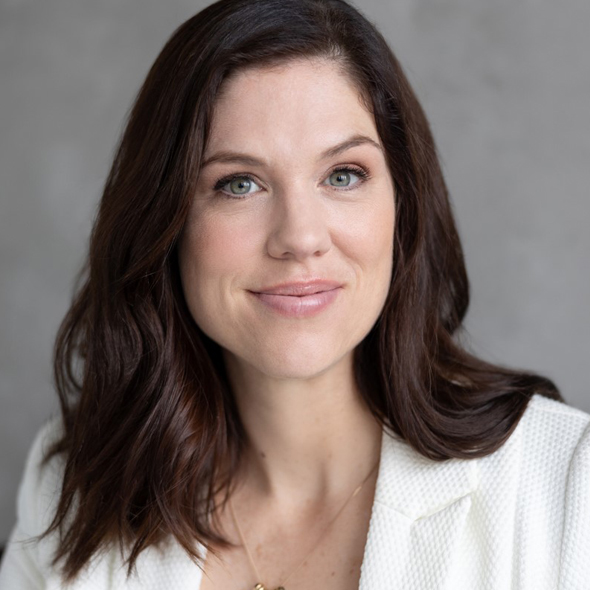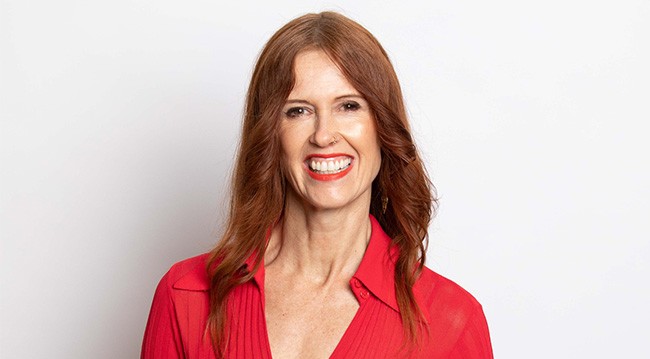The 2024 International Women’s Day official UN Women Australia-led theme this year is Count Her In: Invest in Women and Accelerate Progress. To mark the event, Company Director magazine asked two of Australia’s most successful female entrepreneurs — RedBalloon’s Naomi Simson MAICD (pictured above) and Flamingo AI’s Dr Catriona Wallace — how boards can accelerate progress for the inclusion of entrepreneurial women in the boardroom and leadership development.
Naomi Simson MAICD: “I encourage women to ask for more.”
Naomi Simson MAICD is an entrepreneur, non-executive director, author and keynote speaker. In 2001, she founded online experience gift retailer RedBalloon. In 2017, she co-founded Big Red Group, the largest "experience marketplace” in Australasia. Simson currently holds non-executive director roles at Australian Payments Plus, Colonial First State, Weebit Nano Ltd, University of Melbourne Business and Economics board, Cerebral Palsy Alliance and Big Red Group.
I took on my first external board role in 2010 and I currently sit on six boards, including two philanthropic ones. When I joined one of these boards, it didn't have any women on it. It had never had a female board member. One day, a senior executive whispered in my ear, “Oh my goodness, it is such a different conversation we’re having now. You see things so differently”.
Is it my gender or my experience as an entrepreneur that brings the difference? I don’t know. Of course, as women we don’t know what we bring to the boardroom because we’re only there when we’re in the room, so to speak.
Whether male or female, an entrepreneur mindset is about having an urgent need to solve a particular problem. Female entrepreneurs are more likely to be driven by the social impact solving the problem would bring. An entrepreneur might think, ‘I could do this differently. I could do this better’. They see that a particular way of doing something doesn’t make sense, whether it’s because people are being overcharged or it involves bad business practices.
I’m speaking in averages and everybody is a unique human being. That said, the difference I’ve observed between men and women is that men are more likely to believe they’re “entitled” to start a business and possess a greater degree of confidence in taking the leap. Whereas a woman might say, “I’m not sure if I could do this. What do I need to know before I take that step? How many resources will I need?”
Back when I was doing Shark Tank, I noticed the men would ask for much more money than the women did. That’s a certain kind of hubris. The women were very aware that it was somebody else’s money, and they were going to have to pay it back to the investors at some point. There is a subtle difference in risk-taking as entrepreneurs. Of course, that’s a very broad statement. You’ll find male and female entrepreneurs in both camps. As a director, I am very commercially focused due to my background as a business owner for almost three decades. I’m very customer-focused, and very focused on brand promise. I know I bring a different lens to the board room and that’s due to a number of things.
As directors, our job is about the deployment of resources for the greatest return. We’re custodians of capital. Women may, as business owners, take fewer risks, sure. But it’s not about being a handbrake to innovation and opportunity, because otherwise there would be no returns for stakeholders. This is why there are many benefits to having a board with diverse ideas and experiences. For one, the board needs to be representative of its customer base and reflective of the community it serves. Directors have a responsibility to ensure that all voices are heard.
But it’s not just a one-way street. We need to have a steady supply of women wanting to be on boards. And we need a pipeline of diversity in every sense, including ethnicity and cultural diversity.
Women account for around a third of Australia's small business owners and that number is increasing. On International Women’s Day, I encourage women to ask for more.
#CountHerIn #IWD2024
Dr Catriona Wallace: “Achieving diversity on boards… is proving to be a slow and painful process in Australia.”
Dr Catriona Wallace founded artificial intelligence company Flamingo AI in 2014, and two years later it became the second woman-led business in Australia to be listed on the ASX. Wallace is also founder of the Responsible Metaverse Alliance, executive chair of Boab AI, an adjunct professor at UNSW Business School and a former director at the Gradient Institute. She is also a “shark” on reality TV series Shark Tank Australia.
Wallace explains why she believes a more diverse boardroom brings a host of benefits, including better risk evaluation, a more robust decision-making process and stronger talent retention.
I have sat on the boards of ASX-listed companies, other venture capital boards, plus private companies and not for profits, and there is no doubt in my mind that gender diversity is valuable with regard to problem-solving, creativity, engagement and an ability to attract and retain good talent. It is necessary for any high-functioning organisation, regardless of the sector, to have strong, diverse representation. It is even more critical at a time like now, when economic conditions are challenging.
Achieving diversity on boards — which includes gender diversity beyond just the masculine and feminine — is proving to be a slow and painful process in Australia. There have been some marginal improvements, however, the ASX-listed companies and top venture capital companies are still predominantly male-led. A diverse board brings in different skill-sets and a stronger ability to challenge ideas. It’s a no-brainer that this diversity is needed. In fact, it surprises me that we are still having this conversation.
Female entrepreneurs tend to have a different risk and reward evaluation, and this makes their contribution on boards distinct and beneficial. Why do we have different notions of risk? Many of us have children. I myself have two stepchildren, three biological children and an informally adopted daughter — so that’s six — and I am most definitely a primary caregiver. Women still bear the brunt of most of the work at home. The demands of an entrepreneurial life are high, and a successful entrepreneur almost never has a balanced life. They can have a healthy life, but it’s typically not at all balanced. Because women are still doing most of the work at home, they risk their wellbeing, their health and their relationships when they are also an entrepreneur.
My two youngest children were 10 and 12 when I was running my company out of America. I was a single parent at the time and for four years, I flew back and forth between Sydney and the US every two weeks. When I won my very first multinational contract, my two young children were sitting in the room as I was pitching. I remember thinking to myself, if I was a guy and I didn’t have to keep flying back and forth to look after my children, I’d be a lot more successful. I felt the difference of being a mother viscerally. That said, being a mum enriches me as a business leader.
I identify as gender non-binary and it’s important to note that when we talk about gender diversity in business, we’re often only talking about women and men. We should be talking about all genders, as there are many genders. The trans and gender-diverse community is potentially up to five per cent of the population and we need to become more inclusive of them.
In my experience of working in predominantly male-led entrepreneurial environments, I’ve observed that the entrepreneurial mindset among men is geared more towards profit, scale and status. To me, the mindset of an entrepreneurial woman is often someone who wants to solve problems with social impact.
Boards can accelerate progress for the inclusion of entrepreneurial women in the boardroom and leadership development by having strong visual representation of diverse board members so that people can see them. Diversity attracts diversity. Once you begin, a more diverse board can be formed.
My strongest message is that when we’re having these conversations on International Women’s Day, we need to look beyond thinking about gender diversity as only women and men in binary terms, as there are many other genders.
Latest news
Already a member?
Login to view this content




